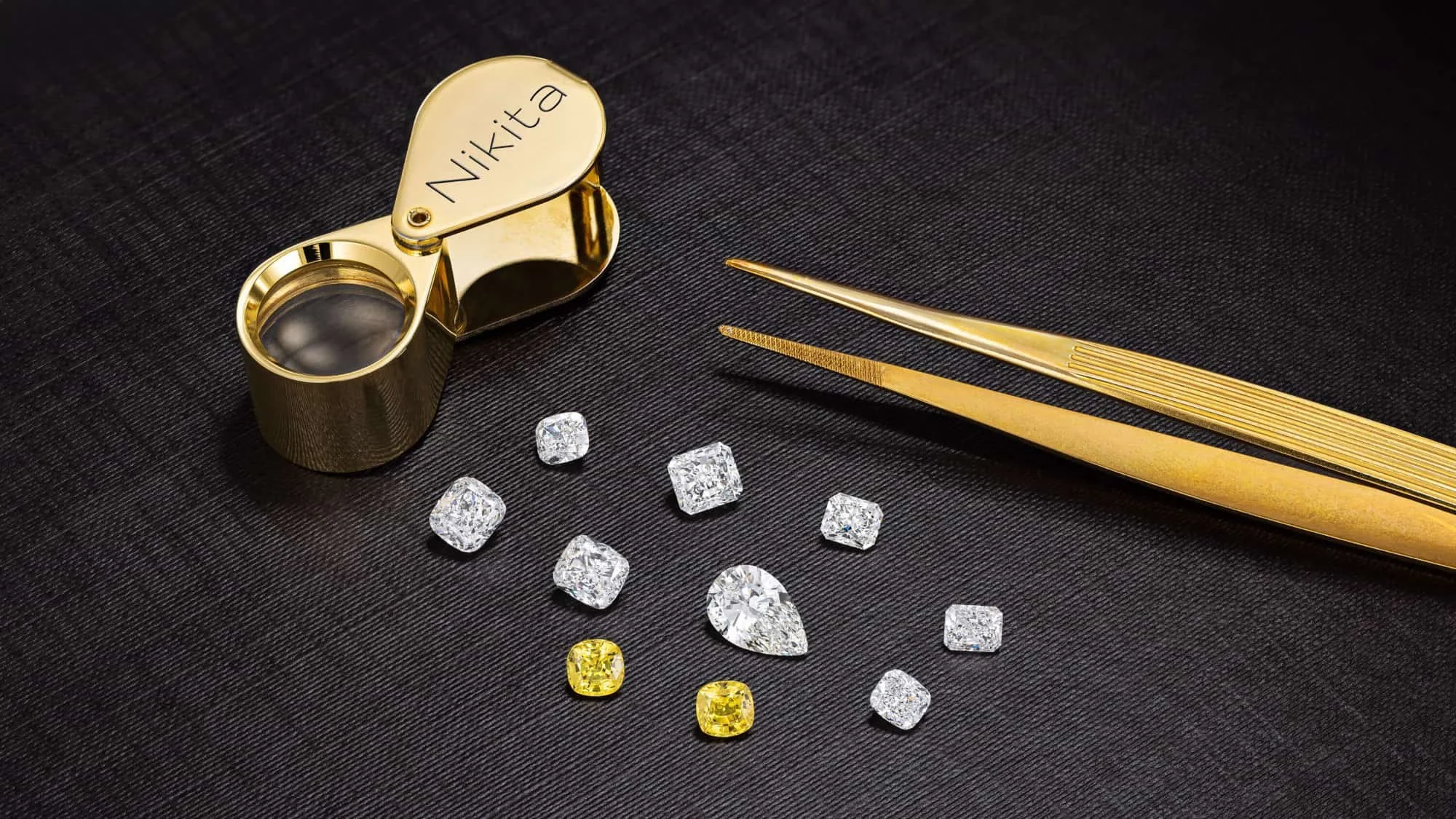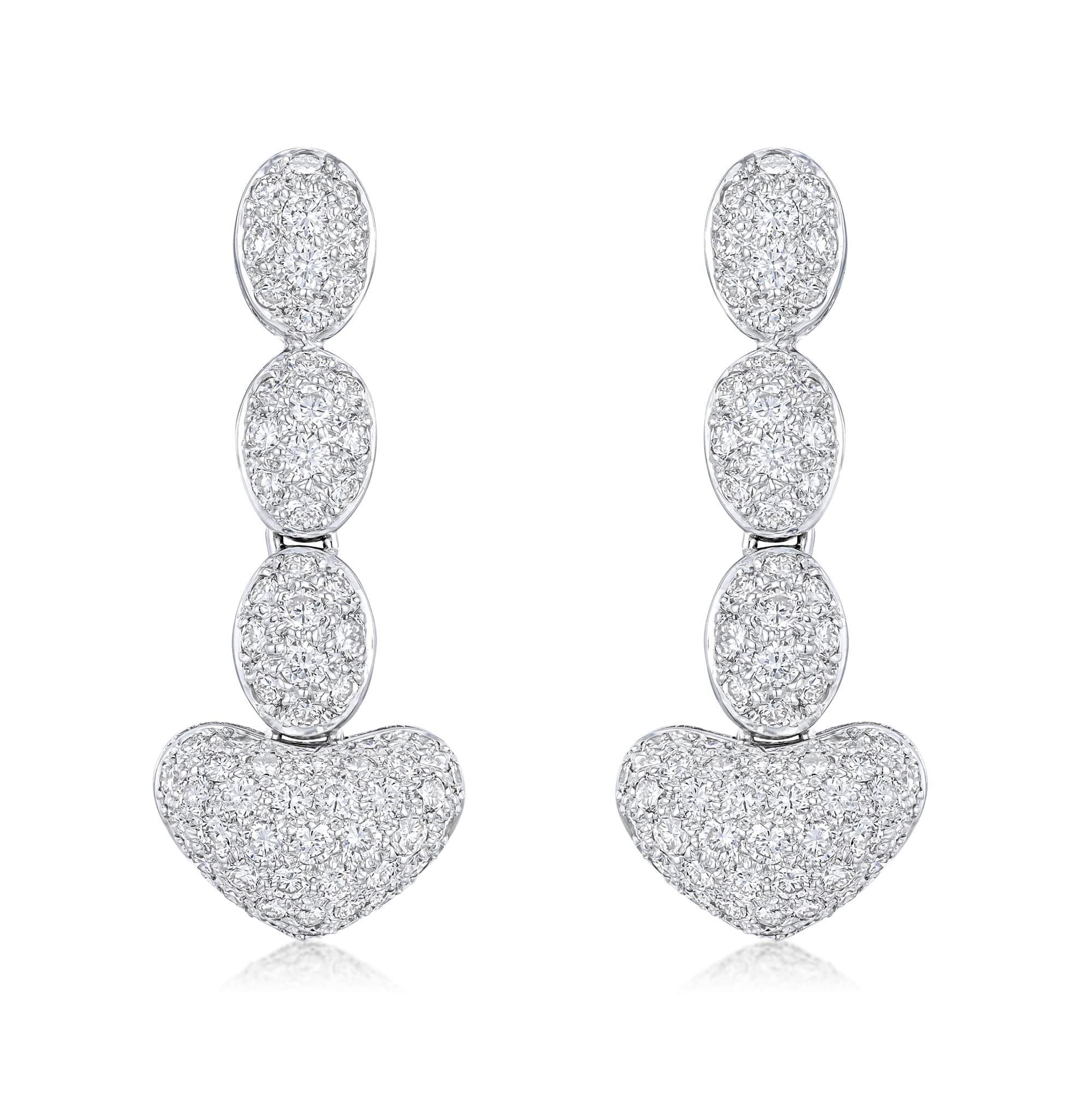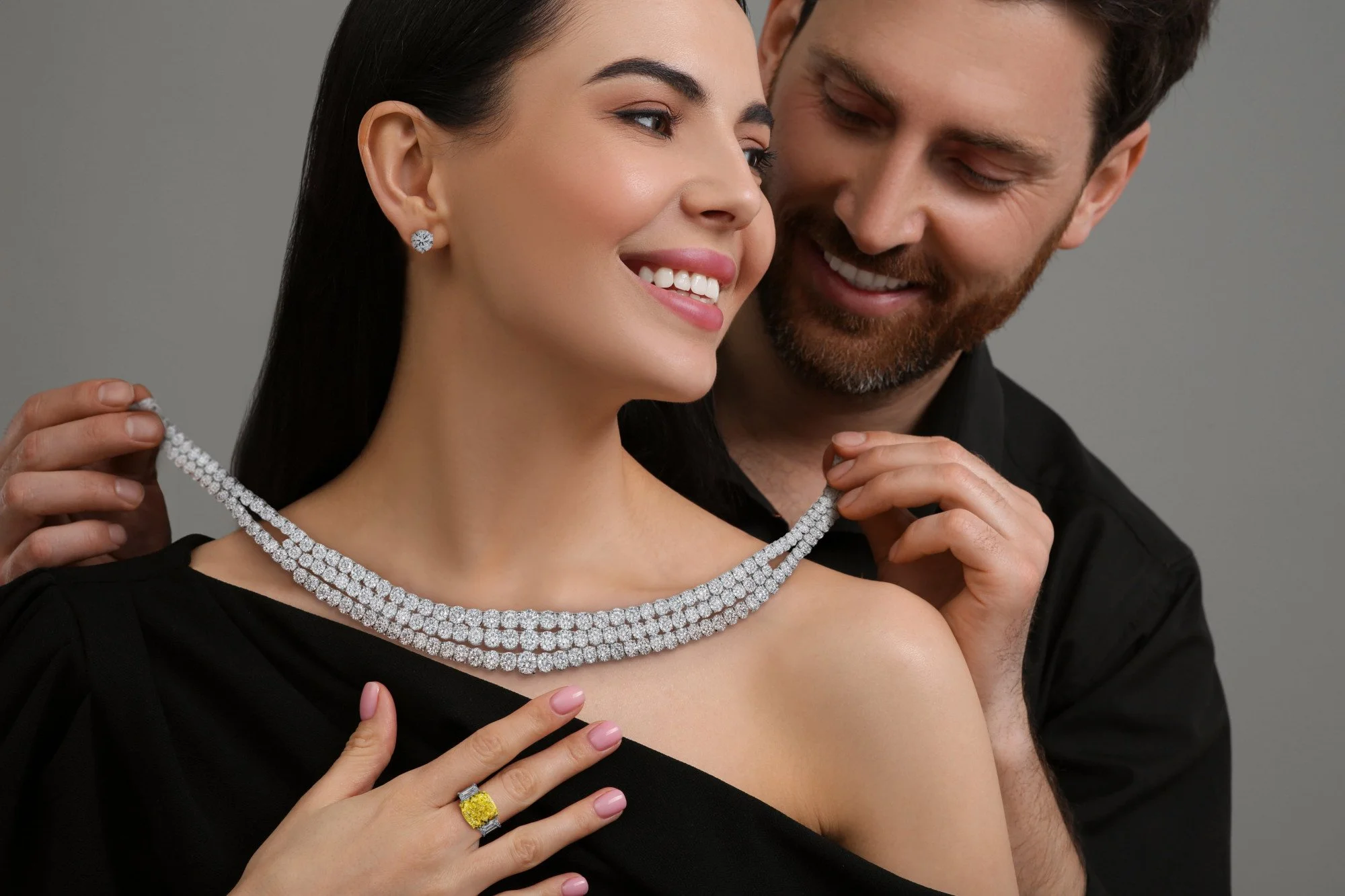How to Choose a Diamond Cut Perfect for You [2025 Guide]
You deserve a diamond that’s as unique and brilliant as you are. However, one problem people struggle with is selecting the right cut. If you’re reading this article, you’re likely undecided about how to choose a diamond cut that matches your style; we’re here to fix that!
Choosing the perfect cut goes beyond just sparkle—it’s about finding a stone that resonates with your style and celebrates your individuality. As a confident, dynamic woman who appreciates affordable luxury, you know that the right diamond can be a powerful symbol of self-love and accomplishment.
Whether you’re treating yourself or commemorating a milestone, selecting the ideal cut is an exciting journey of self-expression. Get ready to explore the dazzling world of diamond cuts and discover the one that will become your signature piece.
Understanding The Different Diamond Cuts
To understand how to choose a diamond cut, it’s essential to familiarize yourself with the various options available. A diamond’s cut affects not only its shape but also its brilliance, fire, and overall appearance.
Let’s explore the different types of diamond cuts and popular shapes to help you make an informed decision.
The 3 Primary Diamond Cut Types
Brilliant Cut: This cut type is designed to maximize a diamond’s brilliance and fire. It features numerous facets arranged in a specific pattern to reflect light internally and externally, creating that coveted sparkle. The Round Brilliant Cut Pendant, with its 82 facets, is a typical example of this diamond cut type.
Step Cut: Step cuts (or emerald cuts) feature long, parallel facets that resemble a staircase. These cuts emphasize a diamond’s clarity and color rather than its brilliance. The Emerald Cut Ring is a classic example of a step cut, known for its elegant “hall of mirrors” effect.
Mixed Cut: As the name suggests, mixed cuts combine elements of both brilliant and step cuts. These cuts aim to balance brilliance with other desirable characteristics. For example, a diamond featuring the shape of an emerald cut and the sparkle of round brilliant cut diamonds provides both elegance and a dazzling light play.
In addition to the different cut types, diamonds also have specific shapes, as we discuss below.
What Are the 8 Popular Diamond Shapes?
Now that you understand the basic cut types, let’s consider some popular diamond shapes you’ll encounter when choosing a diamond cut:
Round Brilliant Diamond: This is a popular diamond shape, accounting for over two-thirds of diamonds sold. Its perfect symmetry and unparalleled brilliance make it a timeless choice.
Cushion-Cut Diamonds: This shape combines a square or rectangular outline with rounded corners, resembling a pillow. It offers a vintage charm with excellent brilliance, making it increasingly popular among modern brides.
Oval Diamond: An elongated version of the round brilliant, the oval cut creates the illusion of a larger stone and can make fingers appear longer and more slender.
Princess Cut Diamond: This square or rectangular cut with pointed corners is the second most popular shape after round brilliant. Princess-cut diamonds offer excellent brilliance and a contemporary look.
Emerald-Cut Diamond: A rectangular step cut with a large, open table that showcases the diamond’s clarity. It exudes sophistication and elegance.
Radiant-Cut Diamond: Combining the brilliance of round-cut diamonds with the shape of an emerald or cushion cut, the radiant cut offers a unique and eye-catching appearance.
Pear-Shaped Diamonds: Also known as the teardrop cut, this shape blends the brilliance of a round cut with the elongating effect of a marquise cut.
Marquise-Shaped Diamonds: Known for their distinctive boat-like shape, marquise-cut diamonds feature pointed ends and an elongated body. This cut maximizes carat weight, making the diamond appear larger. It also creates a stunning, elongating effect on the finger, adding a touch of drama and elegance.
Understanding these shapes will help you select the perfect cut for you. Let’s now dive deeper into the different factors to consider when choosing a diamond cut.
How to Select the Perfect Diamond Cut for You
The cut of a diamond is not just about its shape but rather how well the stone has been faceted, proportioned, and polished. A well-cut diamond allows light to enter through the top, bounce around inside, and then exit back through the top, creating that mesmerizing sparkle we all love. According to diamond experts, even a diamond with excellent color and clarity can appear dull and lifeless if it’s poorly cut.
What, then, should you look out for when selecting a diamond?
4 Factors to Consider When Choosing a Diamond Cut
To understand how to choose a diamond cut, keep these factors in mind:
Finger Size and Shape: Different cuts can flatter various finger types. Elongated shapes like oval or marquise can complement wider fingers, while round or princess cuts might suit more petite hands.
Lifestyle: If you lead an active lifestyle, you might want to consider cuts with fewer pointed edges, like round or oval, which are less likely to snag on clothing.
Budget: Some cuts, like the round brilliant, tend to be pricier due to their popularity and the amount of rough diamonds lost during cutting. Other shapes, like the pear and marquise cuts, might offer more value for your budget.
Setting Style: The cut you choose should complement your chosen setting. For example, a solitaire setting can showcase any cut beautifully, while a halo setting can enhance the sparkle of cuts like a cushion or round brilliant by adding extra layers of brilliance.
Overall, your choice of diamond shape should reflect your style and preferences. However, in addition to that, proper evaluation is essential to help you select the right diamond. Check out the next section, where we outline how you can choose a diamond cut based on workmanship and quality.
How to Evaluate Diamond Cut Quality and Workmanship
Trained gemologists assess diamond cut quality based on several key factors: brightness, fire, and scintillation. These elements combine to create the diamond’s overall visual appeal and light performance.
Here’s a breakdown of what each factor means:
Brightness: The total light reflected from a diamond
Fire: The dispersion of white light into spectral colors
Scintillation: The amount of sparkle a diamond produces and the pattern of light and dark areas
The Gemological Institute of America (GIA) and the American Gem Society (AGS) have established widely accepted cut grading systems to evaluate these qualities. The GIA cut grade scale ranges from Excellent to Poor, while the AGS uses a numbered scale from 0 (Ideal) to 10.
Understanding Diamond Cut Grades
When shopping for diamonds, you’ll encounter cut grades ranging from Excellent to Poor.
Here’s what each grade typically means:
Excellent/Ideal: The highest quality cut, offering maximum brilliance and fire
Very Good: Reflects most of the light that enters the diamond
Good: Reflects a good amount of light, but not as brilliant as higher grades
Fair: Allows some light to escape from the sides or bottom
Poor: Allows most light to escape, appearing dull and lifeless
Most reputable online sellers avoid offering diamonds below a “Good” cut grade, as these stones lack the sparkle and brilliance that make diamonds so desirable. At Nikita Jewelry, we focus on sourcing diamonds of high quality, evidenced by our extensive diamond collection. Continue reading to understand more about why you should pay attention to a diamond’s cut quality score.
The Importance of Cut-Quality Scores
Diamond cut quality scores evaluate brilliance and sparkle based on three main factors: proportions, symmetry, and polish. These elements work together to determine how well a diamond interacts with light.
Here’s a breakdown of what each factor denotes:
Proportion: This refers to the relationships between various parts of the diamond, such as the table size, crown angle, and pavilion depth. Ideal proportions allow for maximum light reflection and refraction.
Symmetry: A well-cut diamond should have facets that align properly and form a symmetrical shape. Poor symmetry can lead to light leakage and reduced brilliance.
Polish: The quality of the diamond’s surface finish affects how light enters and exits the stone. A high-quality polish enhances the diamond’s ability to reflect light.
When evaluating cut quality, it’s essential to consider all these factors combined. A diamond with excellent proportions but poor symmetry or polish may not exude brilliance as well as one with balanced scores across all areas. We’ll now round off this piece by outlining some practical tips that can help you in your search for a well-cut diamond.
Finding a Well-Cut Diamond Within Your Budget
When it comes to choosing a diamond cut, understanding how to balance quality and cost is key. Let’s explore some strategies to help you find that perfect sparkle without breaking the bank.
Balancing the 4Cs
When figuring out how to choose a diamond cut within your budget, it’s essential to balance all four Cs: cut, color, clarity, and carat weight.
Here’s a smart approach:
Opt for VS1 or VS2 (Very Slightly Included 2) clarity range, where inclusions are often invisible to the naked eye
Consider G-J color range (near colorless) diamonds for an icy white appearance at a lower cost
Prioritize cut quality over carat weight for maximum sparkle
Remember, you can always adjust these factors based on your priorities. If size matters most to you, you might compromise slightly on clarity. Similarly, if color is crucial, you could prioritize that over cut.
While the round brilliant cut diamond is a classic, consider non-traditional shapes like oval, pear, or marquise. These cuts can appear larger than round diamonds of the same carat weight, giving you more visual impact for your budget. For instance, a piece of jewelry featuring pear-shaped diamonds and round brilliant cuts is a great example of how alternative shapes can create a stunning effect.
Affordable Luxury Options
Nikita Jewelry offers a range of options that cater to several individuals—including those who are unsure how to choose a diamond cut—while maintaining affordability and style.
For example:
Princess Cut Topaz & Round Brilliant Cut Diamond 4-Stone Pendant set in 18K White Gold at $2,400
Toi et Moi Square Emerald & Trillion Diamond Ring set in 18K White Gold at $3,000
These pieces demonstrate how different cuts and gemstone combinations can create stunning jewelry at various price points. Plus, Nikita Jewelry’s commitment to responsible and ethical sourcing practices ensures that your diamond not only looks beautiful but also aligns with key values.
Frequently Asked Questions
-
Choosing the right diamond cut depends on your hand and finger shape. For wider or longer fingers, opt for elongating cuts like oval or marquise. If your fingers are long, balance them with round or princess cuts for a flattering look.
-
To choose a good diamond cut, look for one with excellent brightness, fire, and scintillation. Ensure the diamond has ideal proportions, symmetry, and polish. Consulting a trained gemologist can help you assess these qualities for a truly stunning stone.
-
The most ideal diamond cut is the round brilliant with an “Ideal/Excellent” rating. This cut maximizes sparkle and is highly coveted for its exceptional brightness and fire, making it a top choice for those seeking dazzling and timeless diamond wedding or engagement rings.
Conclusion
As you decide on how to choose a diamond cut for yourself, remember that this is more than just a purchase—it’s a statement of your unique style and personality. Trust your instincts and choose a cut that resonates with you.
Whether it’s the classic brilliance of a round diamond cut or the modern edge of a princess cut, your diamond should reflect your confidence and individuality. Don’t be afraid to break conventions and select a cut that speaks to your heart. After all, you deserve a diamond that’s as multifaceted and brilliant as you are.
Check out our diamond collections at Nikita Jewelry today!
Nikita Jewelry
LUXURY JEWELRY HANDCRAFTED IN NYC, AVAILABLE TO CUSTOMERS WORLDWIDE.









